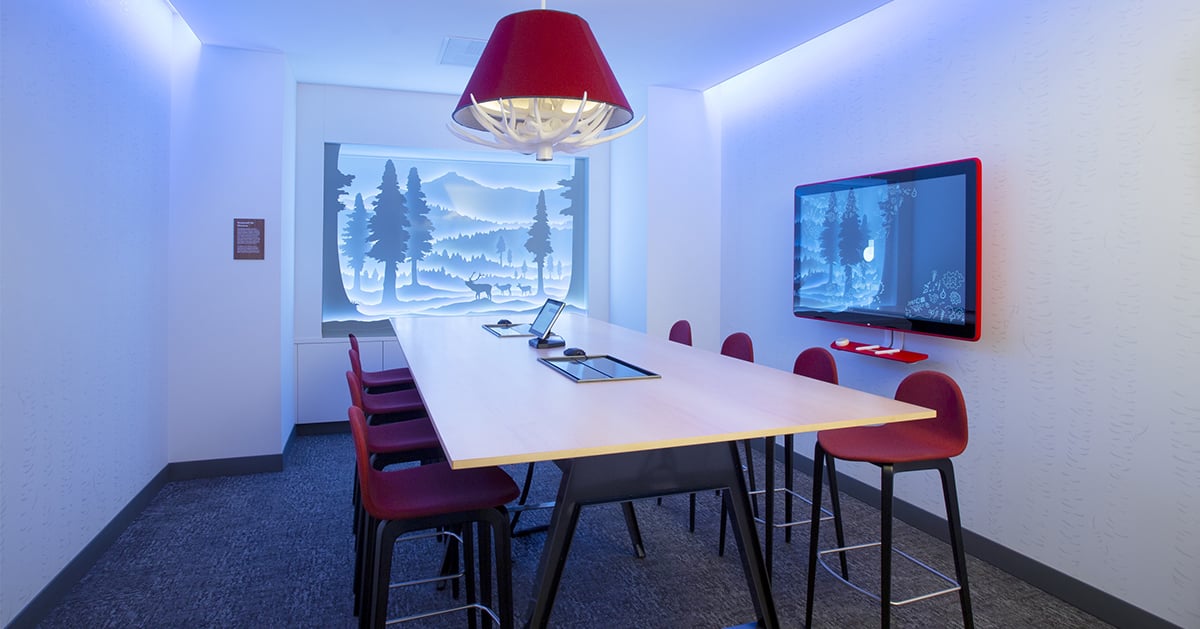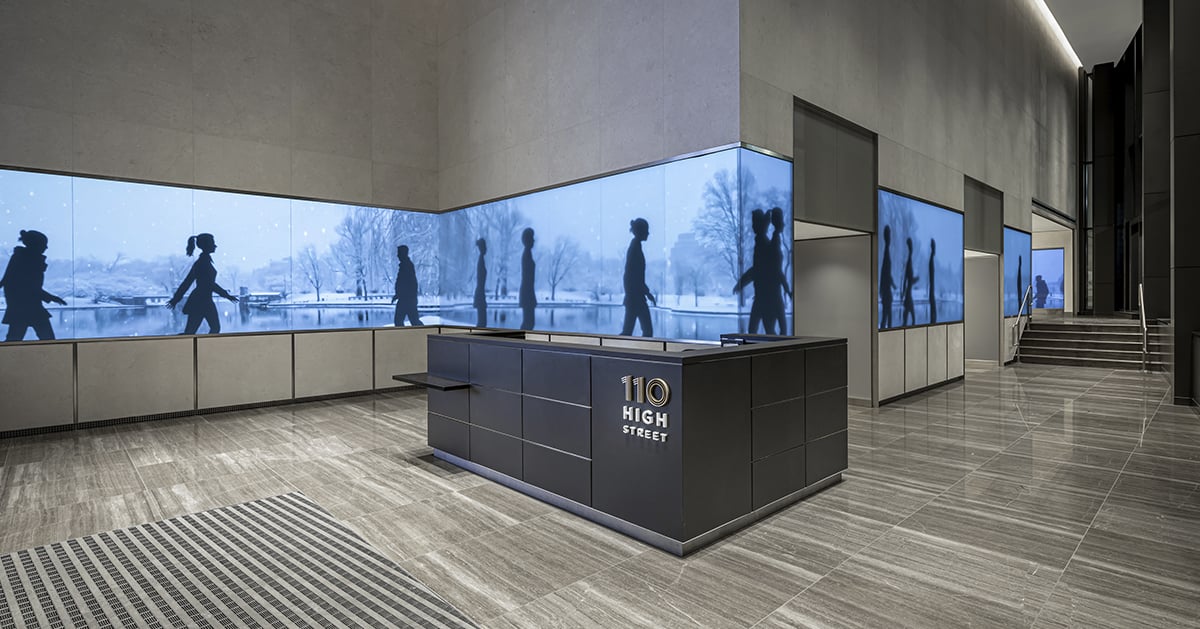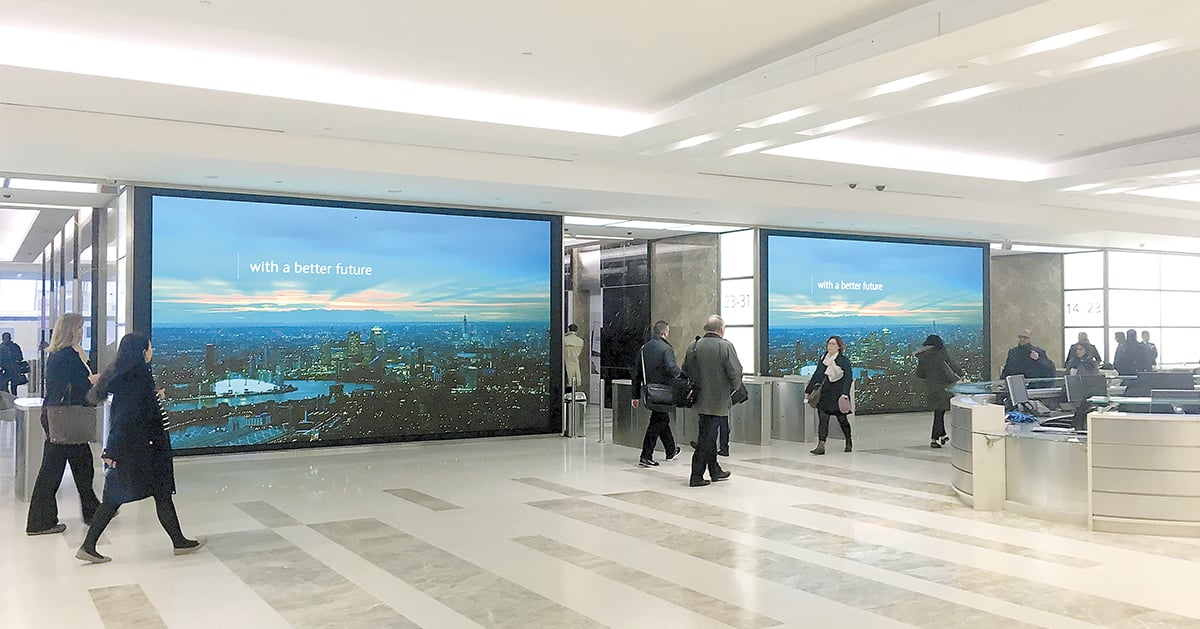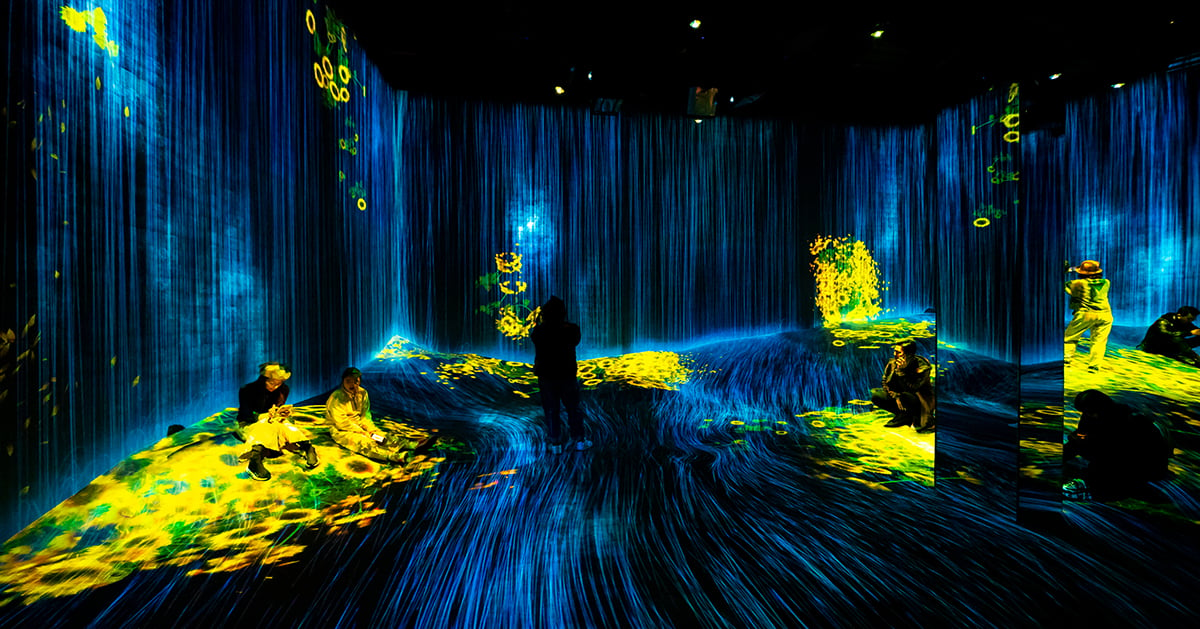
Technology-Rich Experiential Spaces, The Next Way to Attract Talent
The way in which people work is changing and rapidly. The “Great Resignation” is reshaping the workforce. This economic trend, coined by economists, describes employees voluntarily resigning from jobs in mass as they rethink what they need and want from a career. As a result, there’s fierce competition to recruit the next generation of workers and keep them engaged. So, how can companies create an advantage via their spaces?
Companies are seeking opportunities to attract new talent with great design, which illustrates the value of the individual toward a common goal. One element that can help do that is experiential design. Incorporating experiential technology into shared office spaces, from lobbies to meeting rooms to areas of customer engagement, can create unique experiences. That can translate to attracting and retaining key talent.
Inviting Collaboration
With remote work, collaboration didn’t stop. It simply adapted. Collaboration is critical as workers return to the office, either permanently or through hybrid models. The spaces where it happens need to be unique and safe, which could be key motivators to a prospective employee.
A key thing for designers, architects, and builders to consider is that spaces shape those using them and vice versa. In considering collaborative areas, experiential design components can offer aesthetic appeal and practicality.
For meeting spaces, designing them to be both flexible and scalable is critical. Integration of audiovisual solutions should be seamless with repeatable elements. It shouldn’t be hard to collaborate. The space should invite it and foster it.
The audiovisual pieces that should be part of meeting spaces are LED screens that offer interactivity as well as speakers, mics, and cameras that allow for remote attendees to be part of the conversation. Acoustic-friendly areas are necessary, too, providing better sensory experiences.
Many organizations might also consider a mix of formal and informal meeting spaces, which offers a fluid environment. As workspaces continue to change, candidates for hire will want to know how companies are addressing this. High-tech, easy-to-use, and highly configurable spaces signal that a company is committed to its employees.

Immersive Experiences Are Essential for Employees, Too
Immersive design, which involves using technology elements to create interactivity, is most often associated with entertainment venues or other consumer-facing applications. However, there’s a place for it in corporate settings, as well. By taking the time to integrate immersive design into workspaces, companies can set themselves apart from others with the experiences they offer.
Employee engagement is a crucial metric that many employers always try to improve. Immersive design may be the answer. So, how can you integrate that into workspaces?
An immersive workspace combines traditional corporate settings with advanced technology, creating unique experiences for those in them. It’s much more than static displays or standard conference room tech. Creating such an experience can involve:
- Video walls to display data, visuals, or video streams with the ability to react in real-time.
- VR (virtual reality) or AR (augmented reality) tools.
- Multimedia systems
- Projection mapping, a technique that turns any object into a display surface for video, which can be very useful in a variety of environments.
- Transparent LEDs for placement in windows or glass walls, enabling that area to be video screen.
- LIDAR systems that adjust screen and audio content based on the proximity of employees to the elements, the number of people, or the direction they are moving.
- Sound beaming, which enhances the acoustic quality of a space.
- And many move innovative technologies which are improving the individualization of employee environments
When areas are immersive, the space itself is more interactive. Any applicant who visits offices like these will be wowed by the employer's investment. The reason is that these additions strengthen an organization’s brand. It also illustrates that the employer puts a high value on the environment in which its people work, enabling them to thrive and have meaningful experiences, whether physically or digitally.
Pitching these ideas to enterprises when renovating or with new builds will reveal all the possibilities. Ultimately, it’s about creating a space that people want to be in regularly for years to come. Experiential solutions automatically elevate an employer’s offerings outside of salary and benefits. It’s an area where all parties can compete.

Customer Engagement Spaces Matter to Potential Employees, Too
If companies are recruiting for customer-facing roles, those candidates will also base some of their decision on customer engagement spaces.
If they are outdated and lack experiential aspects, this could be a significant turnoff. That’s not the type of impression they want to make. As designers, architects, and builders, you have the opportunity to inspire businesses to upgrade here, as well.
Some ways to add experiential touches include:
- Briefing centers with the latest technology that leaves visitors with memorable experiences.
- Immersive installations that tell the story of brands, ideal for lobbies, reception areas or other customer-focused spaces.
- Creative display options and interactive digital tools for huddle rooms or spaces that where customers and employees meet.
- Multimedia auditoriums and more…
This technology can integrate into the architecture, so it doesn’t seem like an afterthought. With such innovative spaces, potential employees will be excited to interact with customers every day.

Bring Experiential Design Ideas to Employers with Electrosonic
As you look for new ways to inspire your clients, experiential design should be at the top of your list. While you likely have some expertise in the area, you can enrich that by partnering with Electrosonic. We work with designers, architects, and builders as their technology partner to deliver exceptional, fully integrated solutions that make every space more engaging and useful. Let’s talk about how we can work together.
Contact us today, and check out our project portfolio to see how we fuse technology, architecture and storytelling.
Alexander Hann
Alexander Hann, Communications Specialist, understands the challenges that clients face when they are making decisions about technology. He uses his extensive experience of communicating complex concepts to write about the latest developments in technology in a way that clearly explains benefits for business and technical decision-makers.










.jpg?width=1500&height=995&name=ELC501_N17_medium%20(1).jpg)



.jpg)

.jpg)



















.jpg)




.jpg)
-png.png)












.jpg)





.jpg)

-(1)_1200x629px.jpg)




.jpg)
.jpg)





-RR.jpg)







.png)




.jpg)






.png)





















%20(1)-es.jpg)
.jpg)








.jpg)

.jpg)





.jpg)



.jpg)















.png)

.png)





























.jpg)
.png)





.png)

.jpg)


.png)






.jpg)
.jpg)


